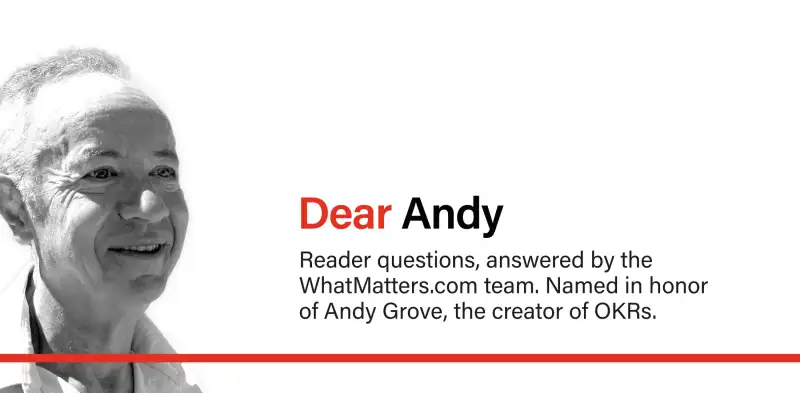Dear Andy,
My team is about to start working on next cycle’s OKRs, and we were wondering if leading indicators or lagging indicators work best for KRs?
Sincerely,
Paula

Hi Paula!
Thanks for writing in and for your great question. While there is no one-size-fits-all rule as to the best type of indicator, I do have a couple of general guidelines that should help.
Rule of thumb: Lagging indicators are the end-game
In a multi-tiered OKR structure, like those usually found in larger companies, most top-level OKRs consist of lagging indicators because those are the end-game goals. As you cascade from the broadest goals at the top to the day-to-day work of small teams, in general you should try shifting to leading indicators. Leading indicators give teams the most ownership, flexibility, and time to change tactics if they need to in order to achieve the goal on time. Let me give you an example.
Let’s say you worked at an upscale fitness center. A top-level Key Result (KR) could be: “the most new members we’ve ever signed up in a year.” That KR is cascaded to the senior management team. Signing up new members is a lagging indicator, so the senior management team needs to ask what result will tell them they are on track to beat last year’s number. Maybe it’s member referrals. Maybe they think the best growth opportunity is in their class offerings that appeal to Gen Z customers.
The smaller the organization, the more we encourage you to use leading indicators. But it’s more important that you, ahem, measure what matters. You are the best judge, though! As broad advice, if you’re using lagging indicators and find that you’re not meeting your OKRs, work your way backward and see if changing to leading indicators helps.
When leading indicators can help
Going back to the fitness center example, let’s say you chose “1,000 new signups a month” for a KR. Halfway through the cycle, your team finds they are nowhere near meeting that goal. During your all-important check-ins, you realize that the open rates of your email blasts are very low. Now you have a leading indicator — maybe you need to make your emails more attractive to potential customers. Or perhaps you need to adjust your target audience. Remember, it’s the discussion as much as the action that is the real value of an OKR. Choosing a leading or lagging indicator can help drive a quality discussion about how to make progress, so pick whichever one does that better.
Thanks for writing in, Paula, and best of luck to you on your OKR journey.
Sincerely,
Billy from the What Matters Team




